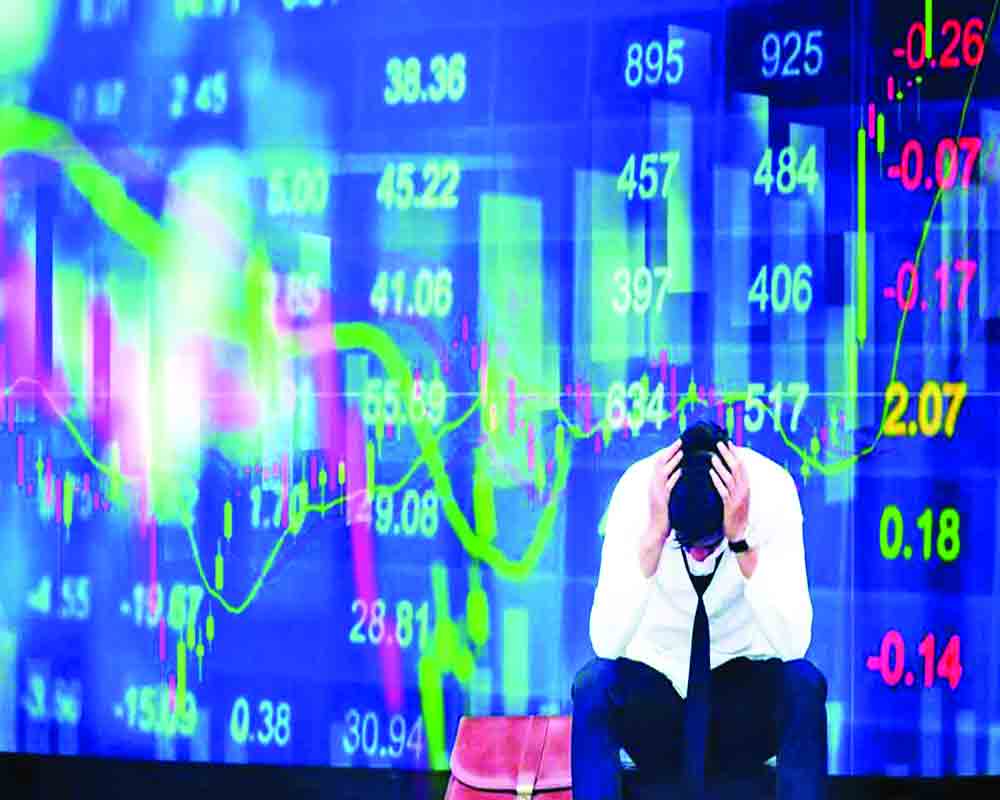Large economies are heading into recession due to Ukraine war and covid
The International Monetary Fund has come out with the economic outlook for October 2022. The report says that the world economy is passing through severe economic challenges. The estimated recession is more severe than expected slowdown. The main drivers of the problem are the lingering Covid-19 global pandemic, Russian invasion of Ukraine, resulting in disruption in the global supply chain in the last two years, higher inflation pressure and the slowdown in China.
The outlook keeps the global forecast unchanged for the current year. However, the report expects a recession in the next year. The IMF estimates global growth to slow from six per cent in 2021 to 3.2 per cent in 2022, and the projection for 2023 has been cut to 2.7 per cent. It is 0.2 per cent lower than its July 2022 forecast.
The three advanced economies – the US, China and the Euro area will continue to decline. Moreover, the tightening monetary policy and financial condition in the United States will slow global growth to one per cent next year.
It is estimated that the slowdown of 2023 will affect the economy, accounting for 33 per cent of the global economy in 2022 and 2023. This is the weakest growth profile since 2001 except the global financial crisis of 2008 and acute phase of the global the Covid pandemic. According to the IMF chief economist Pierre-Olivier, the worst time is yet to come and the year 2023 will be like a recession.
Apart from this, inflation has become a global problem and it is at higher than seen in several decades. It is expected that global inflation will rise from 4.7 per cent in 2021 to 8.8 per cent in 2022, and then gradually decline to 6.5 per cent in 2023 and 4.1 per cent by 2024. The toughest task is how to address these problems. Pierre-Olivier in a blog said that there is a risk that over-tightening policy can take the global economy into an unnecessary severe recession and under-tightening policy could further entrench inflation.
The good thing for India is that we are in a better position as compared to other advanced and developing economies. Pierre-Olivier said in the press briefing that India has been doing fairly well in 2022 and is expected to continue growing fairly robustly in 2023. The outlook for India is for growth of 6.8 per cent in 2022 – a 0.6 per cent downgrade since the July forecast. The growth forecast in 2023 remains unchanged at 6.1 per cent.
Rising inflation is a difficult problem for India. CPI inflation averaged 6.3 per cent in January-March quarter, 7.3 per cent in April-June quarter and 7.0 per cent in July-September quarter in 2022. It rose to 7.41 per cent in September from 7.0 per cent in August 2022. Pierre-Olivier had suggested that the fiscal and monetary policy should be on ‘probably be on a tightening side’. The IMF has projected CPI at 6.9 per cent in 2022 and 5.1 per cent next year. The good thing is that the IMF expects inflation will return to the inflation tolerance band by the financial year 2023-24.
To counter the global challenges, the report suggests that to restore price stability monetary policy must continue and fiscal policy should aim at reducing the cost-of-living pressure. The report also suggests that structural reform can be supported to overcome the problems of inflation by improving productivity and easing supply constraints.
(The author is Associate Professor, Institute of Technology & Science, Ghaziabad)


























